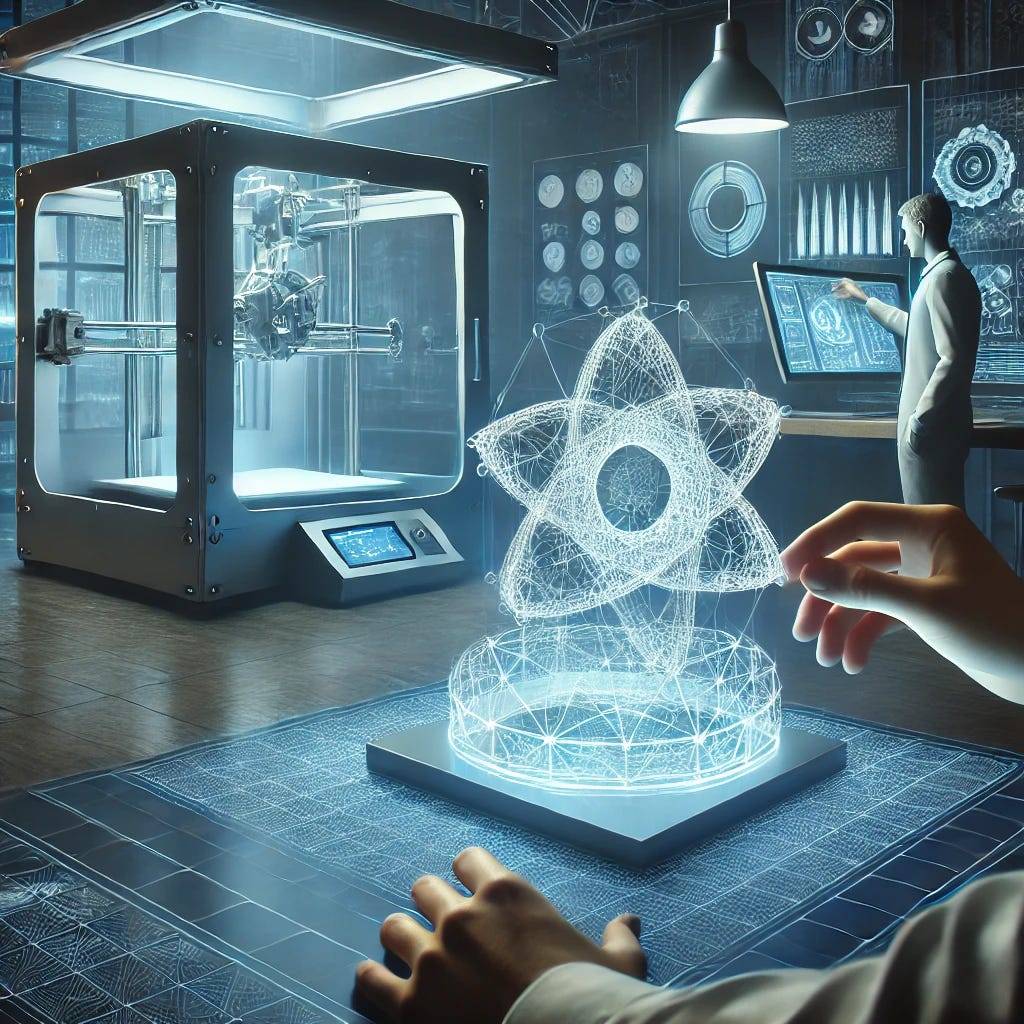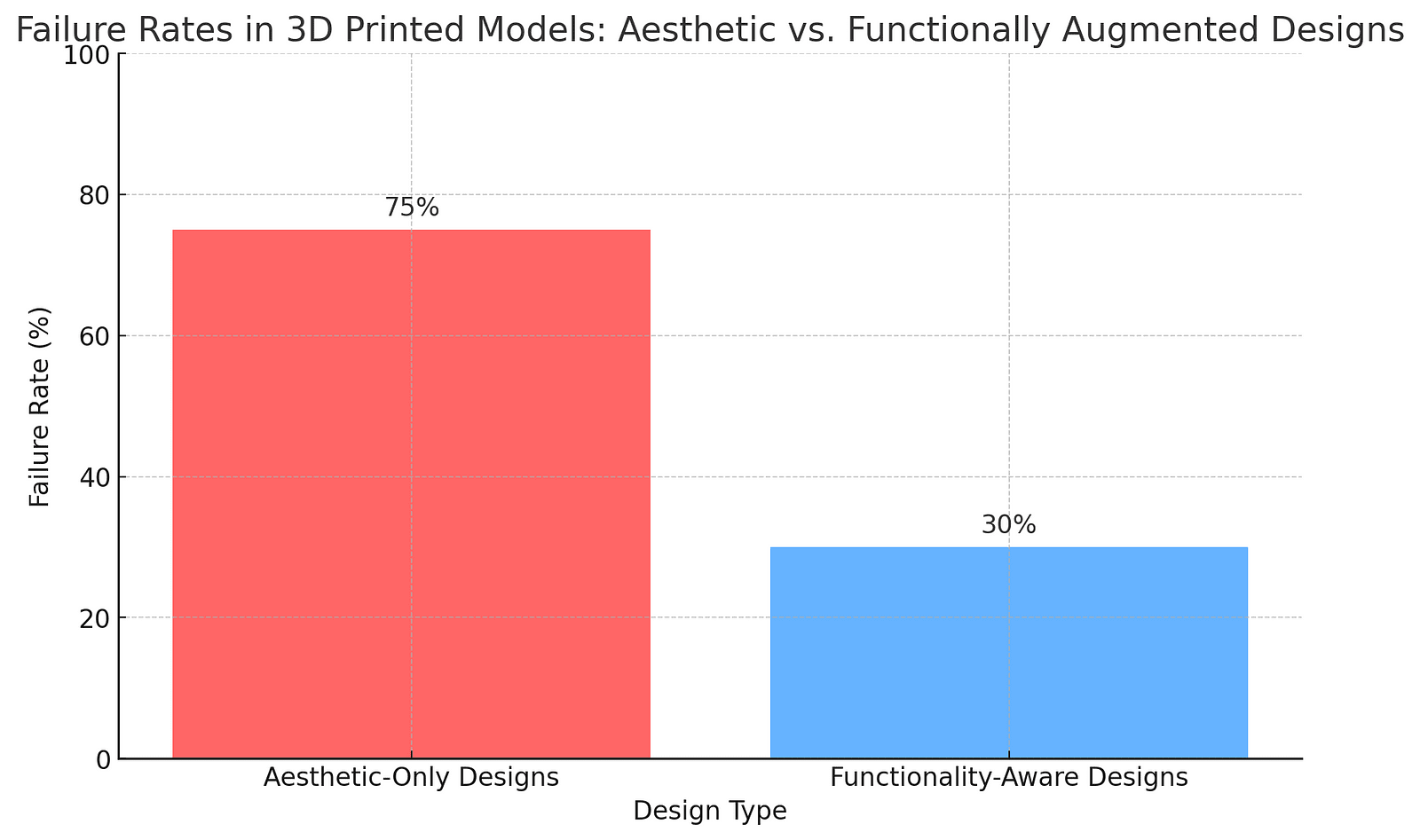
Generative AI is well-known for dazzling images, mesmerizing music, and even immersive 3D renders. Yet, translating these digital marvels into physically functional objects requires a radical shift. Today, the real hurdle is engineering 3D models that withstand practical forces, real-world wear, and environmental stressors without sacrificing style. Like how a bonsai must grow into both beauty and strength, 3D generative AI is at the crossroads of art and durability, striving to merge aesthetic appeal with functional integrity.
Preserving Purpose in Design
As artists refine details on a vase or thumb splint, AI-based design tools must balance aesthetic enhancements with practical limitations. To do this, they analyze essential “functional regions” of the design, protecting these from alterations that would compromise utility. For instance, modifying a thumb splint’s decorative layer without compromising support requires precision — a challenging feat for AI still learning the nuances of physical impact. Like a chef blending flavors without overpowering, generative AI aims to let creators stylize freely while preserving vital functionality, making functional preservation a high art in design.
Encoding Physical Principles into Digital Creations
The next leap is embedding physical rules into AI processes, ensuring designs not only look good but also “behave” in real-world scenarios. Imagine a chair design created by AI that lacks stability under weight — this is precisely what physical functionality encoding aims to avoid. By factoring in material properties, stress tolerances, and even thermal reactions, AI can transform artful renders into reliable prototypes. This leap turns 3D generative tools into genuine assets for engineers, designers, and DIY creators, offering a reliable foundation for innovative fabrication.
Mastering Materials and Mechanics
In the physical world, form and function are intimately tied to materials. Plastic, metal, and wood each carry unique constraints, from tensile strength to resilience under pressure. AI must consider these traits, or it risks creating objects that fail spectacularly — imagine a delicate lamp design breaking with a mere touch. Therefore, generative AI needs a “memory” of material behaviors, making it possible to create dynamic, user-specific objects that endure. With this evolution, AI becomes a craftsman of materials, able to sculpt art that not only impresses visually but also lasts.
To visually explore this technology’s potential, the following graph contrasts the typical failure rates of purely aesthetic generative designs with those augmented by functionality-aware models in a fabrication environment.

Balancing Form with Fabrication: Vital Insights
Aware of Its Surroundings
Generative AI’s primary goal here is context recognition — understanding that an AirPods case needs less rigidity than a thumb splint.
Simulation is Key
By simulating physical impacts before fabrication, AI reduces the trial-and-error cycle, perfecting designs virtually before they touch reality.
Intelligent Segmenting
Tools like Style2Fab allow creators to keep structural sections intact, enabling safe and creative customization of aesthetic regions alone.
Enhanced Customization
Generative models are learning to incorporate user-specific requirements, enabling everything from custom prosthetics to ergonomic homeware.
Continuous Learning
With feedback loops and real-world tests, AI adapts, honing its abilities to produce genuinely user-centered designs.
Practical Beauty in a New Age of AI
Generative AI, evolving to combine artistry with technical rigor, is poised to redefine creative industries, opening a world where personalized, functional, and aesthetic objects become the norm. Imagine a future where anyone can turn inspired ideas into real-world objects — where tech marries form to function, art to engineering, and imagination to usability. This is not merely about design; it’s about creating a world that is truly as we envision it, one enduring, beautiful object at a time.
About Disruptive Concepts
Welcome to @Disruptive Concepts — your crystal ball into the future of technology. 🚀 Subscribe for new insight videos every Saturday!
See us on https://twitter.com/DisruptConcept
Read us on https://medium.com/@disruptiveconcepts
Enjoy us at https://disruptive-concepts.com
Whitepapers for you at: https://disruptiveconcepts.gumroad.com/l/emjml







